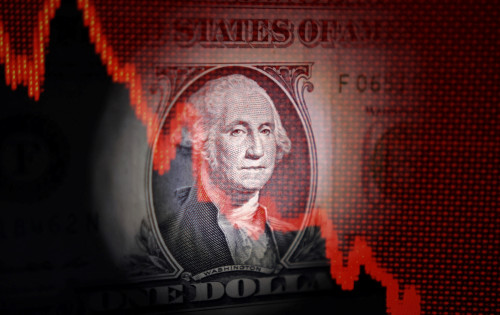By Jason Hovet
PRAGUE (Reuters) -Central Europe’s currencies will mostly find support from a weaker U.S. dollar over the next six months, although the Hungarian forint is set to retreat from around 10-month highs, a Reuters poll showed on Wednesday.
The region’s currencies have been on a stronger footing in recent weeks, with the Czech crown touching an 18-month high, as global trade uncertainties ease after the European Union and U.S. reached a deal on U.S. tariffs and the dollar softens.
Hawkish central bank stances in Hungary and the Czech Republic have also supported the forint and crown, respectively.
But analysts in the poll expect the forint to lose some shine later this year as inflation starts to weaken and economies feel the – mainly indirect – impact of U.S. President Donald Trump’s trade policy.
In the poll, the median forecast had the forint losing 1.7% to trade at 405.00 versus the euro in six months’ time.
“The forint remains supported by favourable positioning and carry appeal, but softening inflation and a weak macro backdrop could push EUR/HUF back toward 405-410 by year-end,” said Peter Virovacz, an ING economist.
Investors in Hungary will be watching a potential return to central bank interest rate cuts, and will also have an eye on parliamentary elections due next year, with worries of fiscal slippage in the run-up.
Romania’s leu is also expected to fade over the next six months, with the poll’s median forecast putting it at 5.12 to the euro, down 0.9% from Tuesday’s close.
The new government in Bucharest faces a lengthy task of bringing down the EU’s largest fiscal gap, a process that could weigh on the currency.
The crown and the Polish zloty are expected to fare better, with both likely to trade mostly unchanged in six months. Analysts forecast the crown to hover around 24.60 per euro over the next half-year.
Meanwhile, the Czech central bank (CNB) is taking a cautious stance on further rate cuts in its easing cycle, although many analysts expect another reduction later this year.
“A decline in CNB rates could lead to renewed depreciation pressures in the fall,” Komercni Banka said in a report.
“The negative factors could be partially offset by the CNB’s high foreign exchange reserves, the Czech economy’s positive growth differential vis-à-vis the euro area, and the global weakening of the U.S. dollar.”
Similarly, Poland has launched interest rate cuts in recent months, after a long pause, but the zloty is expected to keep within a recent range of 4.25-4.30 per euro in the coming months and is forecast at 4.27 in six months, or 0.4% stronger than Tuesday’s closing price.
(Other stories from the Reuters August foreign exchange poll)
(Reporting by Jason Hovet, Polling by Mumal Rathore and Indradip Ghosh)







